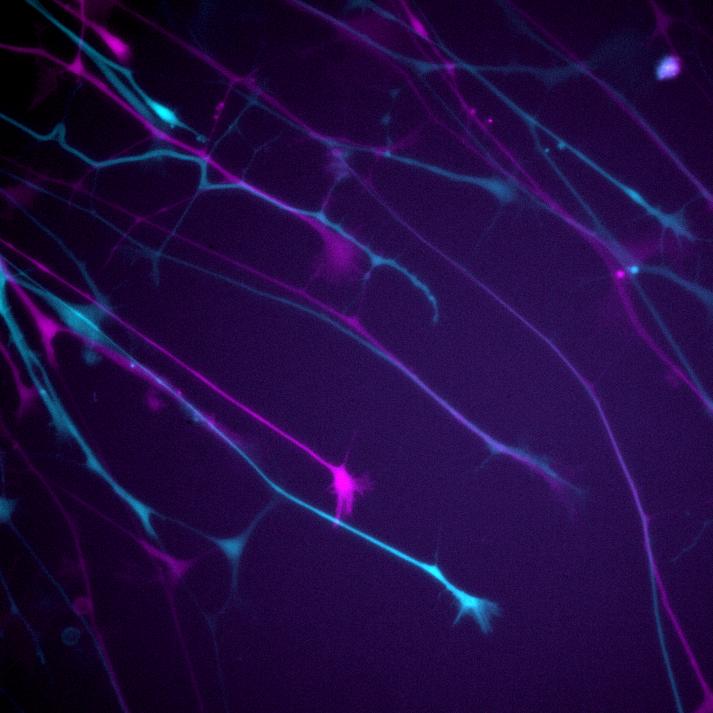Decoding the regulation of cell survival – A major step towards preventing neurons from dying

Neurite outgrowth assay of neurons expressing GFP. The first and last time point (0 min, 50 min) are pseudocolored in magenta and cyan, respectively. Busskamp Lab CRTD
miRNAs were first discovered 25 years ago, but understanding their impact on gene regulation of messenger RNAs (mRNAs) is still incomplete. While computer-based studies predict the maximum range of miRNA interactions, some of which can bind thousands of mRNAs, experimental studies usually provide only one or very few.
The research team discovered that, contrary to previous assumptions, brain-enriched miRNA (miR-124) is unnecessary during neuronal differentiation from adult human stem cells, but has a huge effect on neuronal survival.
The team combined both experimental and computational approaches and performed an in-depth system level analysis of miR-124. They found 98 miR-124 targeted genes that are simultaneously regulated.
Many of these controlled genes had direct physiological functions, in particular protecting neurons from dying. The research group used a novel computational approach to also investigate indirect effects, namely the miR-124 targeted genes that themselves are regulators of gene expression.
“Our deep mechanistic insights may lead to biomedical applications enabling the protection of neurons against degeneration. In addition, previously uncharacterised genes in the regulatory networks could be investigated and new functions assigned to them”, says Volker Busskamp. The interdisciplinary approach of experimental manipulation and sophisticated bioinformatic analysis sets new standards in the miRNA gene regulation research.
Professor Katja Nowick (FU Berlin, Germany), Professor Johan Jakobsson (University of Lund, Sweden), Professor Peter F. Stadler (University of Leipzig, Germany) and Dr. Volker Busskamp (TU Dresden, Germany) and corresponding laboratory members contributed to this international and interdisciplinary project.
Dr. Volker Busskamp
http://www.crt-dresden.de/research/research-groups/core-groups/crtd-core-groups/…
“Combined experimental and system-level analyses reveal the complex regulatory network of miR-124 during human neurogenesis”, Cell Systems
DOI: 10.1016/j.cels.2018.08.011
https://www.cell.com/cell-systems/fulltext/S2405-4712(18)30358-2
Media Contact
All latest news from the category: Interdisciplinary Research
News and developments from the field of interdisciplinary research.
Among other topics, you can find stimulating reports and articles related to microsystems, emotions research, futures research and stratospheric research.
Newest articles

Recharging the Future: Batteries Built for Extreme Cold Using Negative Thermal Expansion
Most solids expand as temperatures increase and shrink as they cool. Some materials do the opposite, expanding in the cold. Lithium titanium phosphate is one such substance and could provide…

Self-Destructing Cancer Cells: Cutting-Edge RNA Breakthrough
Jülich scientists use novel RNA technology to selectively switch off tumours in the brain. An Adaptable Platform Technology That Destroys Glioblastoma Cancer Cells Using a special RNA molecule, a team…

Endurance Training: Transforming Lives of Heart Failure Patients
Can strength and endurance training be beneficial for patients with a certain form of heart failure? A research team from Greifswald investigated this question together with seven other research centers…



